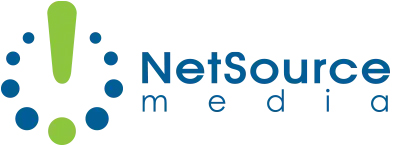The business landscape today is much more dynamic than the one of yesteryear. Social media platforms offer exciting new ways to connect with customers. You might be familiar with the most popular examples like Facebook and Twitter. But you also might be unfamiliar with some of the newer platforms like Instagram, Pinterest, and even Vine.
With so many options available, and new services being created all the time, it can get hectic trying to juggle your social media campaigns. It is important to note that businesses don’t really have to use every platform available. In fact, using the wrong platforms (or too many platforms) can muddle your message and dilute your resources. Here are some tips on how to stay focused.
Facebook is King
Facebook has proven itself as the front-runner of social media for many years. It is often cited as the most popular platform to connect with customers on a more casual basis. It also offers a lot more advanced features for your business that others do not.
- You can post all types of media, including photos, videos, and long blog-like posts
- There is an advertising system built into the platform wherein you can attract customers without them having to leave the platform
- Facebook offers analytic tools so you can track your performance
There is also integration with different maps services allowing customers to “check-in” at your business location and then share it with their friends.
No one can say how long Facebook will retain such a large user base and relevancy, but we also can’t deny that it is the place to be right now for most businesses.
Alternative Platforms
Facebook offers a complex, feature-rich environment, but the other “big hitters” in social media are more streamlined. Twitter relies on a “follow” system instead of a “friend” system. It is also more limited in how you can post. Text is limited to 140 characters per post. You can use “hashtags” (Twitter’s tagging system for grouping content and creating trending topics). Video and pictures are also allowed.
Google+ is the new(ish) kid on the block. Though this platform is the youngest of the group, it happens to have the most advanced features. Google+ can be used in much the same way that Facebook is, and it also plays very nicely with other Google services like YouTube, Google Maps, and Gmail. Advertising is just now being implemented and more advanced features will arrive in 2014.
More niche platforms include Pinterest, Instagram, and Vine. Pinterest revolves around “pins” which let you view and collect short posts with pictures. Instagram and Vine are for quick, in-the-moment picture and video capture (respectively).
Narrowing It Down
There are so many choices in social media that it is important to focus your resources. For many companies, it makes sense to rule out the niche services right away. Pinterest, Instagram, and Vine offer little value in terms of advertising or market penetration.
Facebook and Google+ offer the best options for posting more detailed write-ups. Twitter is a fantastic option for quickly communicating with customers, or quick updates (like at a trade show). Twitter has less in the way of advertising choices, so you’ll have to consider whether that will be a major part of your campaign.
Other Considerations
One service that I haven’t mentioned yet is LinkedIn. It is definitely worth a look if you want your company to be noticed in the business community. Many business professionals are using this platform, not just for their own personal profiles, but also to manage pages for their organization. There are options for writing posts (which show up in your connections’ feeds) as well as advertisements.
We like to use the phrase “social media” to describe the big platforms I described above. The truth is that everything on the internet is becoming social media. YouTube, blogs, email… it is all becoming more and more connected. Look for alternative avenues to engage your customers.
Keep your social media campaign focused by choosing the platforms that will benefit your type of business. If you need a lot of features, try Facebook, Google+, or a blog. If you want to stay on top of the latest trends in the industry, give Twitter a look. Whatever you decide to choose, be active. Customers want to follow someone who creates high quality content often.
If you need help kick-starting your social media campaign, contact the internet experts at NetSource Media: (800) 709-3240
Timothy Harden is NetSource Media’s Marketing Assistant and web expert. You can follow him on Twitter at @NetSourceMedia.


